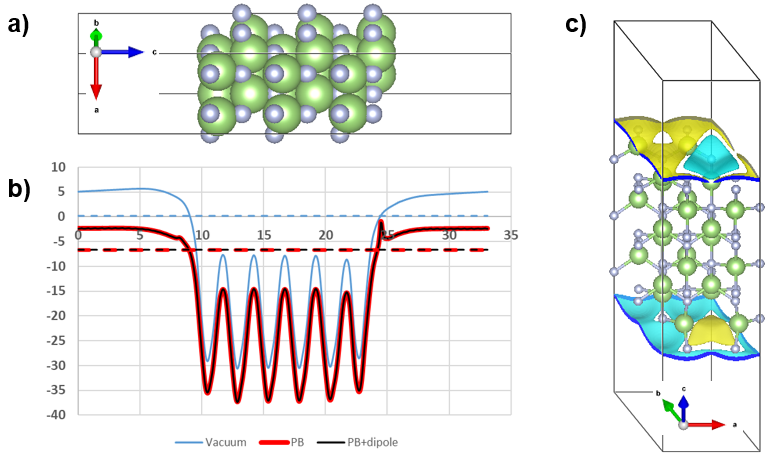Library
MKL(Math Kernel Library)은 선형 대수 및 수치 계산에 특화되어있는 상용 소프트웨어로, BLAS, LAPACK, FFT, 벡터 수학 등의 고성능 함수를 제공한다. Intel에서 라이선스를 구입해야 하지만, 무료로 사용할 수 있는 비상업용 라이선스도 있긴 하다. MKL은 다중 스레드를 지원하며, Intel 프로세서에서 최적화되어 있어 높은 성능을 제공한다.
Partial occupancy
The tetrahedron method with Blöchl corrections (ISMEAR=-5) gives a good account of the electronic density of states (DOS). The only drawback is that the method is not variational with respect to the partial occupancies. Therefore the calculated forces and the stress tensor can be wrong by up to 5 to 10% for metals. Only for semiconductors and insulators, the forces are correct because the partial occupancies do not vary and are either zero or one.
Chemical Reactions
Appel reaction
Alcohol (or Carboxylic acids) -> Alkyl chloride
ORCA
Parallelization
Call ORCA by a full path (This is important so that ORCA can determine where all the different ORCA subprograms are)
Note that when running ORCA in parallel, ORCA should NOT be started with mpirun or srun
In general you should not ask for more than 75 % of the physical memory available (since ORCA occasionally will use more than the maxcore setting).
CASSCF
Dispersion interaction
DFT Methods for van der Waals Interactions
Non-Local Correlation (NLC) Functionals
Empirical Dispersion Corrections: DFT-D
DFT의 주요한 개발이 이루어지고 있던 2000년대 중반에 semi-local density functional (GGA)가 dispersion을 정확히 기술하지 못한다는 것이 알려졌고, 이는 최근에야 Non-local correlation (NLC) fuctionals의 개발로 어느정도 해결된 문제이다. 그럼에도 -C6/R6의 형태를 가진 empirical potential 을 도입하여 아주 빠르고 간단하게 이를 기술할 수 있다. NLC functional을 사용하지 않는 이러한 접근방식을 dispersion-corrected DFT (DFT-D)라고 한다.
DFT-D2
가장 오래된 방법은 Stefan Grimme이 개발한 DFT-D2로 다음과 같은 pairwise atomic term을 가지고 있다.
Collinear vs Noncollinear calculations
Chirality Waves in Two-Dimensional Magnets
Magnetism is a cooperative phenomenon where spins of magnetic ions spontaneously orient relative to each other below a certain ordering temperature. In principle, arbitrarily complex magnetic orderings are possible; however, the magnetic states encountered in nature tend to be simple, the most common being ferromagnetism (one atom in magnetic unit cell, Fig. 1(a)] and antiferromagnetism (two distinct atoms in magnetic unit cell, Fig. 1(b)]. More complex orders, such as noncollinear spirals [Fig. 1(d)] and various noncoplanar orders [e.g., Fig. 1(e)] are less common, typically arising from the interplay of magnetic exchange interactions, spin-orbit (SO) coupling, frustrated lattice structure, and magnetic field.
Differential equations
Differential equation: an equation containing derivatives of an unknown function.
Ordinary differential equation (ODE): an equation that contains one or several derivatives of an unknown function.
Partial differential equations (PDEs): differential equations that involve partial derivaties of an unknown functino of two or more variables.
Photoexcitation
photoexcitation induced time-dependent density functional theory molecular dynamics
Photoexcitation Induced Quantum Dynamics of Charge Density Wave and Emergence of a Collective Mode in 1T-TaS2
Supporting Information

